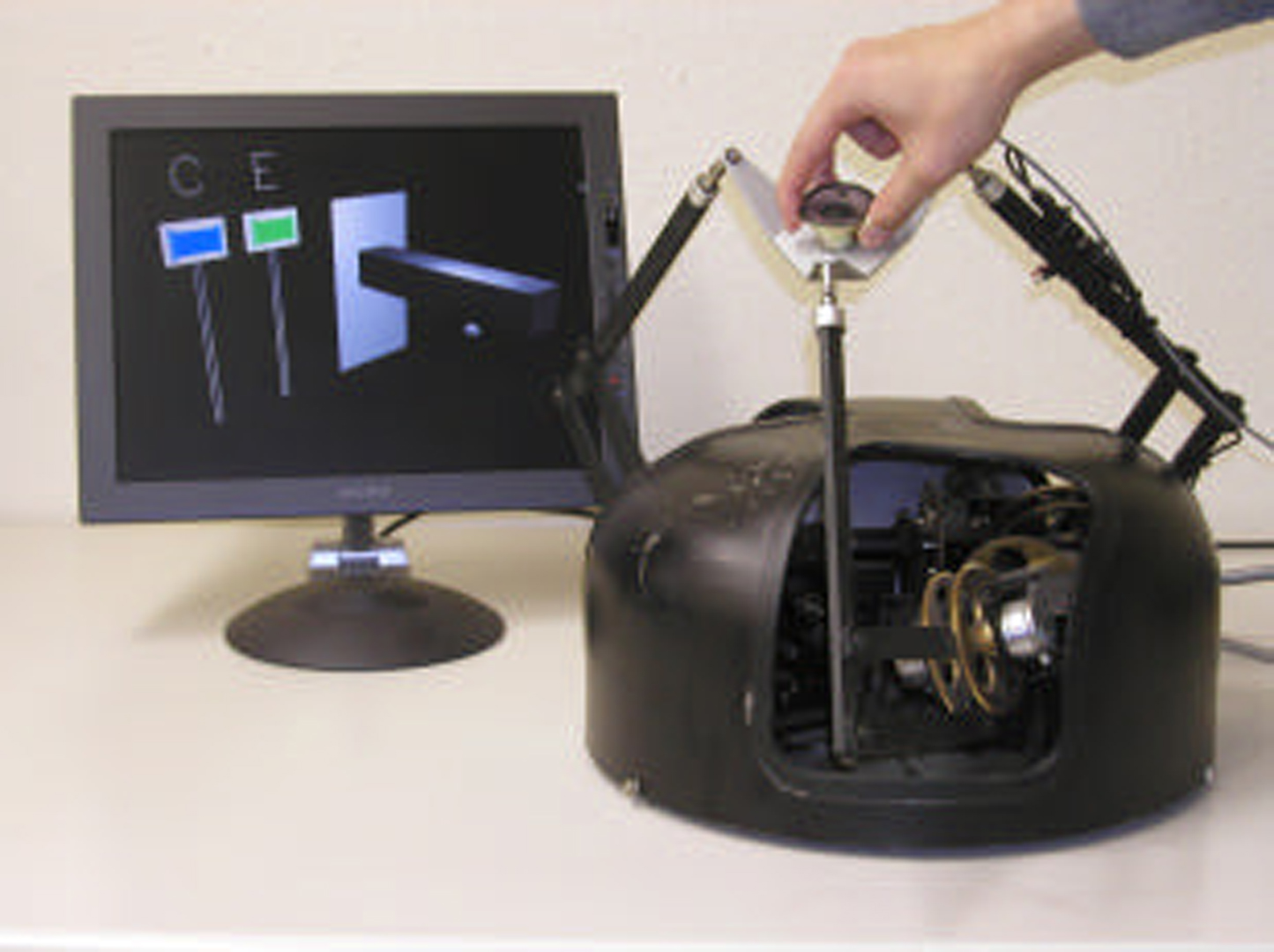“Audio Haptics” by Iwata, Yano and Igawa
Conference:
Experience Type(s):
E-Tech Type(s):
Entry Number: 66
Title:
- Audio Haptics
Organizer(s)/Presenter(s):
Description:
Abstract
Audio Haptics is a rendering technique for auditory and haptic sensations. Sound and force are generated by using a physical model of virtual objects. We developed a software for real-time calculation of a physical model of virtual objects. A speaker is set at the grip of the haptic interface for spatial localization of the sound.
1 Purposes and goals of the project
Auditory information plays an important roll in interaction with virtual objects. When we hit an object in the real world, we can hear sound emitted from the object. We also feel a reaction force simultaneously. This natural phenomenon isn’t realized in virtual environments. The typical technique for auditory feedback in virtual environments is modulation of pre-recorded sounds. However, generation of sound depends on the shape, attributes, inner structure and locations of impact. The pre-recorded technique can’t be applied to such conditions.
The major goal of this project is generation of sound and reaction force from a physical model of a virtual object. A physical model enables the user to hear sounds of new shapes and material of virtual objects. The user can also hear sounds from arbitrary impact points of the virtual object by physical model.
2 Technical Innovation of the Project
We developed a software for real-time calculation of physical models of virtual objects. Audio rendering is composed of three parts: (1) collision detection, (2) calculation of the vibration of virtual objects, and (3) sound emission. Finite Element Method (FEM) is used to obtain vibration of the object. Sound emission is calculated using sound pressure value from a partial-differential-equation. A speaker is set at the grip of the haptic interface for spatial localization of the sound.
The physical model is also used for the haptic rendering. Reaction force is calculated according to shape, elasticity and viscosity of the virtual object. Sound and force output are displayed to the user simultaneously using shared memory. The calculation can be done in real-time using a 2GHz Pentium 4 PC.
3 Larger implications of the project beyond this
demonstration phase
Potential applications of the Audio Haptics are:
(1) Virtual instrument
A new musical instrument can be created using the Audio Haptics technology. For example, the user can change the attributes of material of percussion instrument and can create new sound.
(2) Inspection simulator
People often hit objects when they inspect them. They can obtain knowledge about the physical characteristics of an object, such as density distribution, by hitting it and hearing the sound. A simulator for such inspection can be built using the Audio Haptics technology.
Keyword(s):
- sound rendering haptics
- physical model






